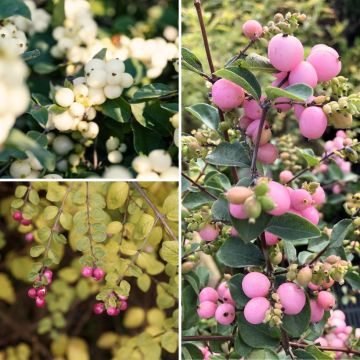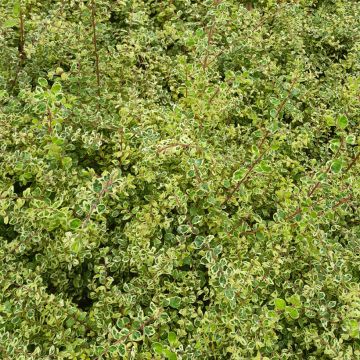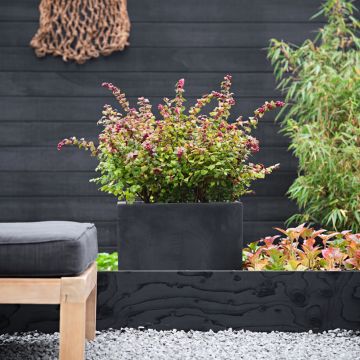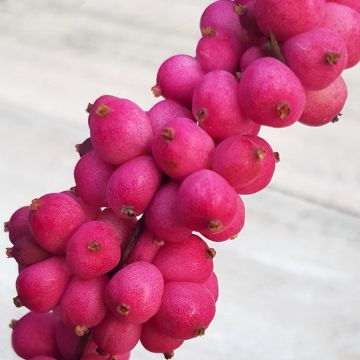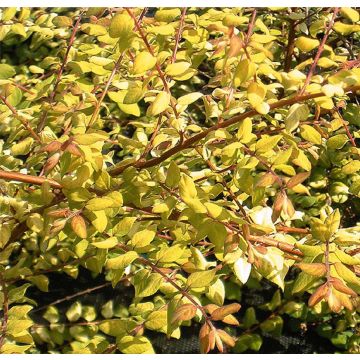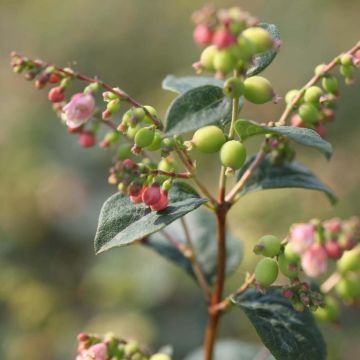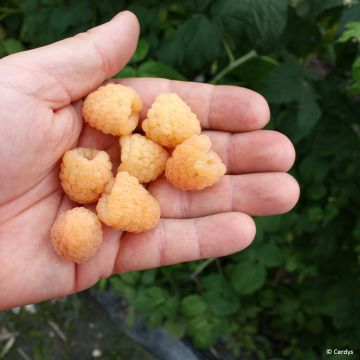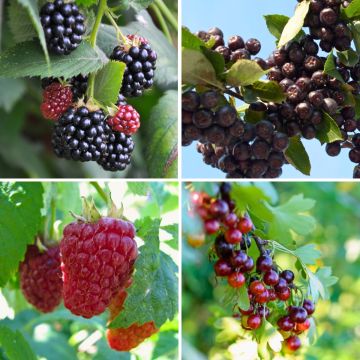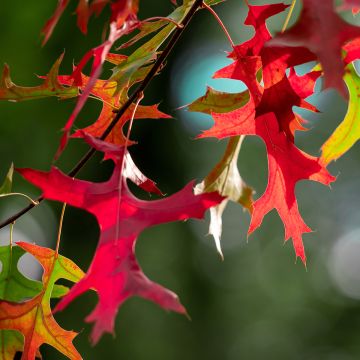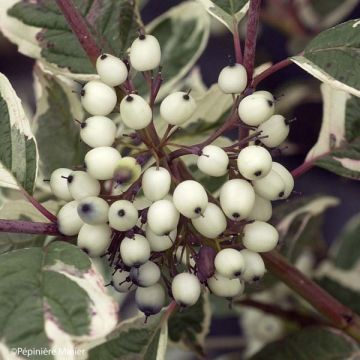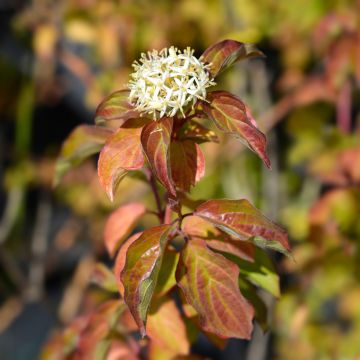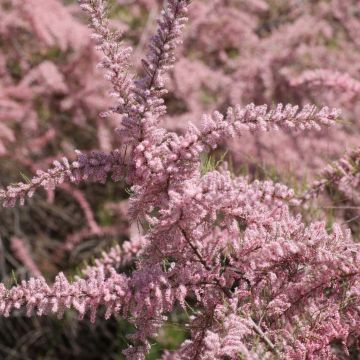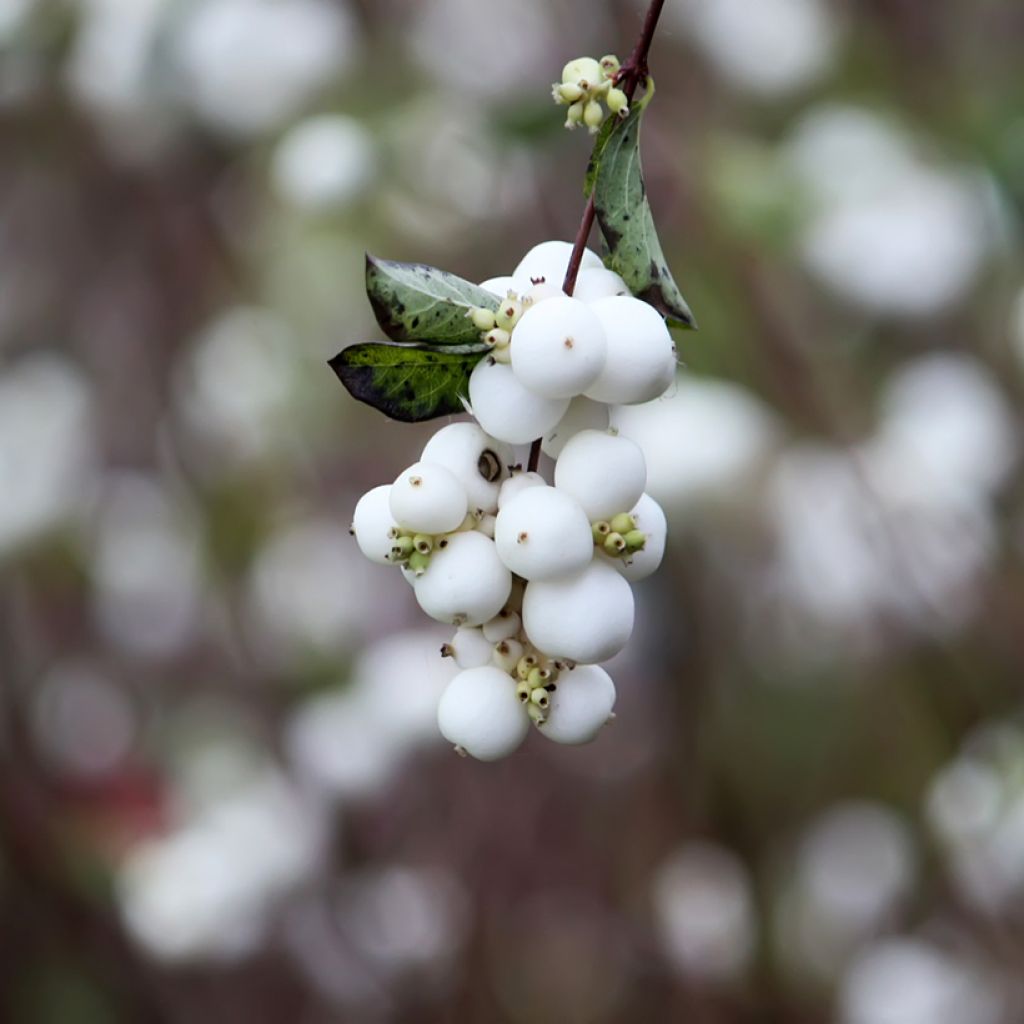

Symphorine blanche - Symphoricarpos albus var. laevigatus
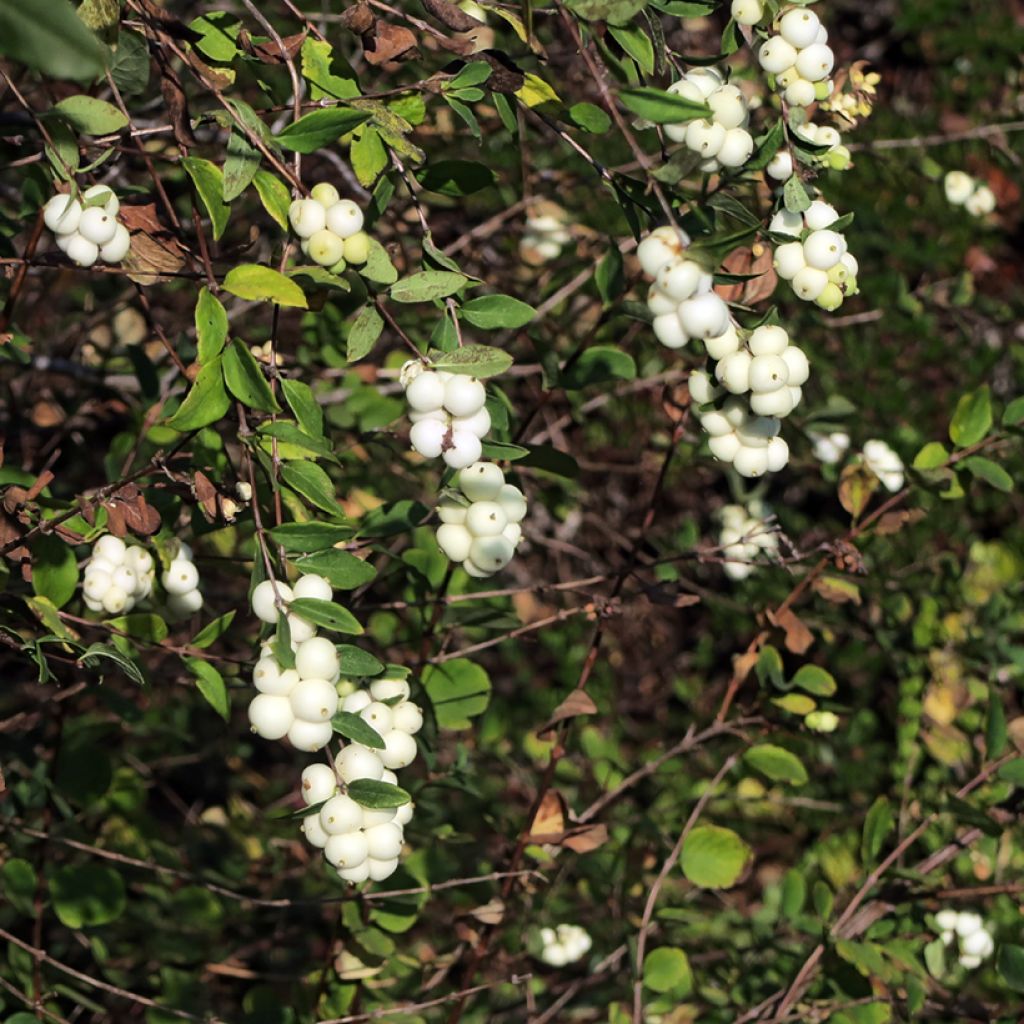

Symphorine blanche - Symphoricarpos albus var. laevigatus
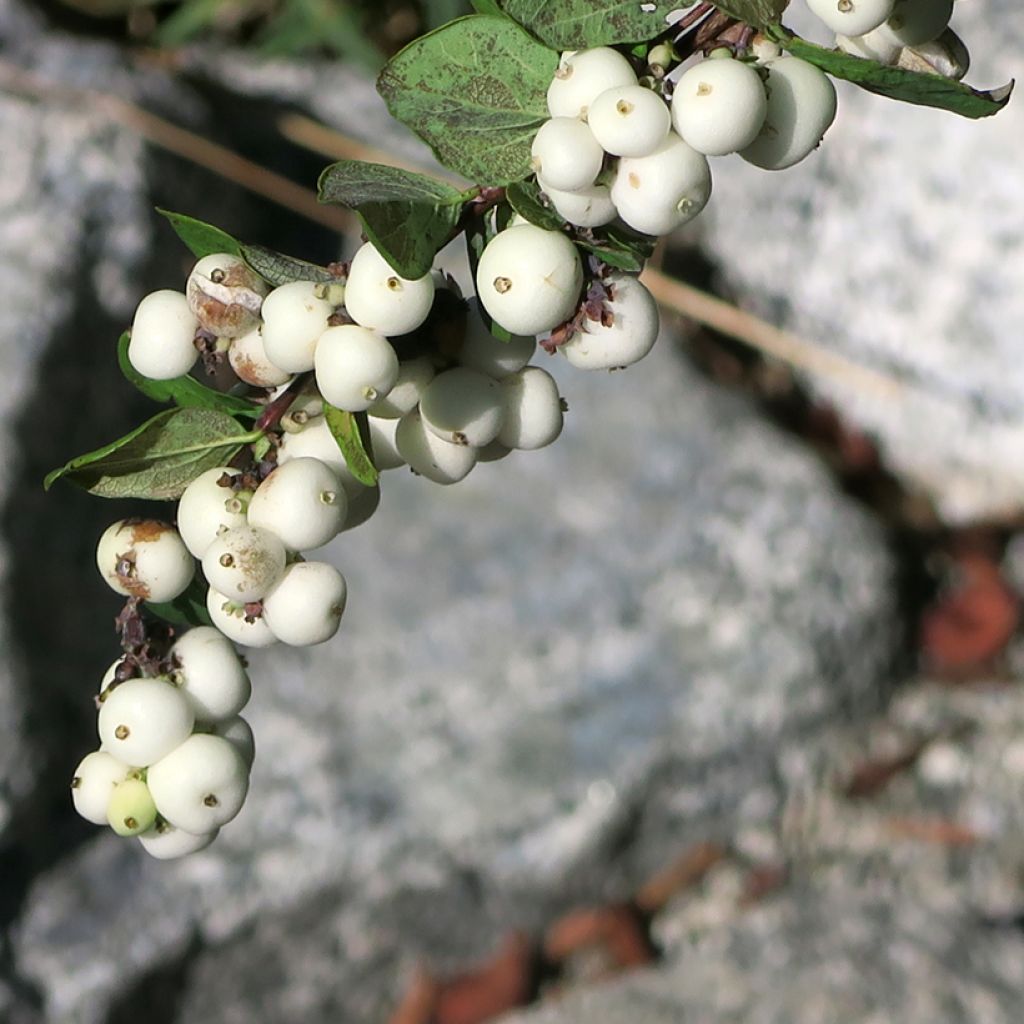

Symphorine blanche - Symphoricarpos albus var. laevigatus
Symphoricarpos albus var. laevigatus Laevigatus
Symphorycarpos albus var. laevigatus Laevigatus
Common Snowberry, Waxberry
Hello, I bought about ten bare-root young plants this autumn, planted them this spring, and they started growing very quickly. I'm not disappointed with this purchase.
jj, 20/05/2025
Special offer!
Receive a €20 voucher for any order over €90 (excluding delivery costs, credit notes, and plastic-free options)!
1- Add your favorite plants to your cart.
2- Once you have reached €90, confirm your order (you can even choose the delivery date!).
3- As soon as your order is shipped, you will receive an email containing your voucher code, valid for 3 months (90 days).
Your voucher is unique and can only be used once, for any order with a minimum value of €20, excluding delivery costs.
Can be combined with other current offers, non-divisible and non-refundable.
Home or relay delivery (depending on size and destination)
Schedule delivery date,
and select date in basket
This plant carries a 24 months recovery warranty
More information
We guarantee the quality of our plants for a full growing cycle, and will replace at our expense any plant that fails to recover under normal climatic and planting conditions.

Would this plant suit my garden?
Set up your Plantfit profile →
Description
The Symphoricarpos albus var. laevigatus, commonly known as the white snowberry, is a deciduous bush that is highly resistant and originates from North America, naturalized in France. It is a large bush with a natural appearance, light foliage, and is highly suitable for creating low-maintenance flowering hedges or shrub beds. Its main attraction lies in its pearly white fruiting, which enlivens dark areas of the garden and provides food for birds during winter. This snowberry produces numerous suckers, allowing it to quickly occupy the area. It thrives almost anywhere, making it a virtually fail-proof plant.
The Symphoricarpos albus var. laevigatus belongs to the Caprifoliaceae family, just like honeysuckles. This hardy deciduous bush is native to the western part of North America. Introduced in the early 19th century, it easily naturalized in Europe. It is a border plant that thrives in temperate and cold climates and can tolerate almost any conditions, except for arid situations. This snowberry even tolerates salt spray and urban pollution. It is used in urban landscaping, for example, to stabilize slopes along roads.
The white snowberry laevigatus forms a bushy, ramified bush, reaching an average size of 2 meters (7 feet) in all directions (up to 2.50 meters (8 feet) in height), with rapid growth. Its branches are slender and slightly arched. Its foliage consists of small oval-rounded leaves, measuring 2 cm (1in) in length, with a green-blue color on the upper surface and a lighter green on the lower surface. The lamina is glabrous, unlike what is observed in the Symphoricarpos albus. Flowering occurs from June to August, in the form of small bell-shaped flowers with a pinkish-white color, gathered in discreet clusters. After pollination by insects, they give way to numerous small berries, measuring 1 cm (1in) in diameter, with a pearly white color and a spongy texture. They persist on the branches from September to January. These berries are slightly toxic if ingested, but are highly appreciated by birds.
Symphoricarpos are known for their robustness and beautiful winter fruiting. The white snowberry laevigatus is ideal for greening difficult areas of the garden, adding a rustic yet elegant touch. It is appreciated for its ability to thrive in both shade and sun, its simplicity, and its beautiful pearly white fruiting. Plant it in a free hedge or in a shaded and bare corner of the garden, for example, under a large tree. To accompany it, consider white spireas, shrubby honeysuckles, physocarpus, guelder rose, which are equally accommodating and easy to grow.
Report an error about the product description
Plant habit
Flowering
Foliage
Botanical data
Symphorycarpos
albus var. laevigatus
Laevigatus
Caprifoliaceae
Common Snowberry, Waxberry
North America
Other Symphoricarpos
View all →Planting and care
The white laevigatus symphoricarpos adapts to all exposures: it tolerates shade, but will be more floriferous and fruitful in partial shade or in the sun. It is a hardy and easy-to-grow bush that is suitable for all types of deep soils, even limestone, clayey or poor soils. It even tolerates dry soils and roots that are found under large trees and at the base of hedges. You can do a pruning in late winter.
Planting period
Intended location
Care
-
, onOrder confirmed
Reply from on Promesse de fleurs
Similar products
Haven't found what you were looking for?
Hardiness is the lowest winter temperature a plant can endure without suffering serious damage or even dying. However, hardiness is affected by location (a sheltered area, such as a patio), protection (winter cover) and soil type (hardiness is improved by well-drained soil).

Photo Sharing Terms & Conditions
In order to encourage gardeners to interact and share their experiences, Promesse de fleurs offers various media enabling content to be uploaded onto its Site - in particular via the ‘Photo sharing’ module.
The User agrees to refrain from:
- Posting any content that is illegal, prejudicial, insulting, racist, inciteful to hatred, revisionist, contrary to public decency, that infringes on privacy or on the privacy rights of third parties, in particular the publicity rights of persons and goods, intellectual property rights, or the right to privacy.
- Submitting content on behalf of a third party;
- Impersonate the identity of a third party and/or publish any personal information about a third party;
In general, the User undertakes to refrain from any unethical behaviour.
All Content (in particular text, comments, files, images, photos, videos, creative works, etc.), which may be subject to property or intellectual property rights, image or other private rights, shall remain the property of the User, subject to the limited rights granted by the terms of the licence granted by Promesse de fleurs as stated below. Users are at liberty to publish or not to publish such Content on the Site, notably via the ‘Photo Sharing’ facility, and accept that this Content shall be made public and freely accessible, notably on the Internet.
Users further acknowledge, undertake to have ,and guarantee that they hold all necessary rights and permissions to publish such material on the Site, in particular with regard to the legislation in force pertaining to any privacy, property, intellectual property, image, or contractual rights, or rights of any other nature. By publishing such Content on the Site, Users acknowledge accepting full liability as publishers of the Content within the meaning of the law, and grant Promesse de fleurs, free of charge, an inclusive, worldwide licence for the said Content for the entire duration of its publication, including all reproduction, representation, up/downloading, displaying, performing, transmission, and storage rights.
Users also grant permission for their name to be linked to the Content and accept that this link may not always be made available.
By engaging in posting material, Users consent to their Content becoming automatically accessible on the Internet, in particular on other sites and/or blogs and/or web pages of the Promesse de fleurs site, including in particular social pages and the Promesse de fleurs catalogue.
Users may secure the removal of entrusted content free of charge by issuing a simple request via our contact form.
The flowering period indicated on our website applies to countries and regions located in USDA zone 8 (France, the United Kingdom, Ireland, the Netherlands, etc.)
It will vary according to where you live:
- In zones 9 to 10 (Italy, Spain, Greece, etc.), flowering will occur about 2 to 4 weeks earlier.
- In zones 6 to 7 (Germany, Poland, Slovenia, and lower mountainous regions), flowering will be delayed by 2 to 3 weeks.
- In zone 5 (Central Europe, Scandinavia), blooming will be delayed by 3 to 5 weeks.
In temperate climates, pruning of spring-flowering shrubs (forsythia, spireas, etc.) should be done just after flowering.
Pruning of summer-flowering shrubs (Indian Lilac, Perovskia, etc.) can be done in winter or spring.
In cold regions as well as with frost-sensitive plants, avoid pruning too early when severe frosts may still occur.
The planting period indicated on our website applies to countries and regions located in USDA zone 8 (France, United Kingdom, Ireland, Netherlands).
It will vary according to where you live:
- In Mediterranean zones (Marseille, Madrid, Milan, etc.), autumn and winter are the best planting periods.
- In continental zones (Strasbourg, Munich, Vienna, etc.), delay planting by 2 to 3 weeks in spring and bring it forward by 2 to 4 weeks in autumn.
- In mountainous regions (the Alps, Pyrenees, Carpathians, etc.), it is best to plant in late spring (May-June) or late summer (August-September).
The harvesting period indicated on our website applies to countries and regions in USDA zone 8 (France, England, Ireland, the Netherlands).
In colder areas (Scandinavia, Poland, Austria...) fruit and vegetable harvests are likely to be delayed by 3-4 weeks.
In warmer areas (Italy, Spain, Greece, etc.), harvesting will probably take place earlier, depending on weather conditions.
The sowing periods indicated on our website apply to countries and regions within USDA Zone 8 (France, UK, Ireland, Netherlands).
In colder areas (Scandinavia, Poland, Austria...), delay any outdoor sowing by 3-4 weeks, or sow under glass.
In warmer climes (Italy, Spain, Greece, etc.), bring outdoor sowing forward by a few weeks.






























